VisionIAS
08:24
Tuesday, August 18, 2020
GS Score Weekly Current Affairs August 2020 Week 03 PDF
VisionIAS
07:40
GS Score Weekly Current Affairs August 2020 Week 03 PDF
Click Here to download GS Score Weekly Current Affairs August 2020 Week 03 PDF
Click Here to Like our Facebook page for latest updates and free ebooks
Vision IAS Prelims 2021 Test 5 Hindi With Solution PDF
VisionIAS
07:14
Vision IAS Prelims 2021 Test 5 Hindi With Solution PDF
Click Here to download Vision IAS Prelims 2021 Test 5 Hindi With Solution PDF
Click Here to Like our Facebook page for latest updates and free ebooks
Monday, August 17, 2020
National Health ID
VisionIAS
17:15
Why in news?
Prime Minister announced a national health ID for every Indian.
What is the national health ID system?
- The national health ID will be a repository of all health-related information of a person.
- According to the National Health Authority (NHA), a person who wants their health records available digitally must create a Health ID.
- Each Health ID will be linked to a health data consent manager such as National Digital Health Mission that will be used to seek the patient’s consent.
- It will allow for seamless flow of health information from the Personal Health Records module.
How will the Health ID be created?
- It will be created by using a person’s basic details and mobile number or Aadhaar number.
- This will make it unique to the person, who will have the option to link all of their health records to this ID.
What was the original proposal for the health ID?
- The National Health Policy 2017 aimed at creating a digital integrated health information system that would serve the needs of all stakeholders.
- This system could improve efficiency, transparency and citizens’ experience with linkage across public and private healthcare.
What did the Niti Aayog do?
- Based on this proposal, in 2018, Niti Aayog floated a consultation of a digital backbone for India’s health system - National Health Stack.
- In this consultation, a Digital Health ID was proposed to reduce the risk of preventable medical errors and increase the quality of care.
- The system will also enable the users to obtain a longitudinal view of their healthcare records.
What did the Central government do?
- This Niti Aayog proposal was then further taken up by the Central government.
- The Ministry of Health and Family Welfare, the NHA, and the MietY prepared a strategy overview document.
- The document is about making India a digital health nation by enabling digital healthcare for all.
Which systems does the national health ID interact with?
- Various healthcare providers such as hospitals, labs, online pharmacies, insurance companies, etc., will participate in the health ID system.
- While option of digital Health ID will be there, in case a person does not want Health ID, then also treatment should be allowed.
Have there been global instances of such a health record system?
- In 2005, the UK’s National Health Service (NHS) started deployment of an electronic health record system.
- The goal was to have all patients with a centralised electronic health record by 2010.
- Many hospitals acquired electronic patient records systems as part of this process.
- But, there was no national healthcare information exchange.
- The project had been plagued by changing specifications, technical challenges and clashes with suppliers.
- This left it years behind schedule and way over cost.
- The program was dismantled after a cost to the UK taxpayer was more than £12 billion.
Source: The Indian Express
Daily Current Affairs, 17th August 2020
VisionIAS
17:08

1) PM Modi announces “One Sun, One World, One Grid” initiative
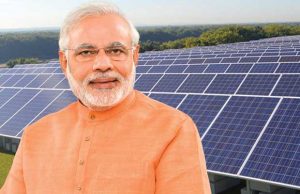
•As per the draft plan prepared by the Ministry of New and Renewable Energy (MNRE), the OSOWOG will connect 140 countries through a common grid that will be used to transfer solar power. “The vision behind the OSOWOG mantra is “the Sun never sets” and is a constant at some geographical location, globally, at any given point of time.
Three phases of OSOWOG
The OSOWOG plan will be executed in three phases to share solar and other renewable energy resources:
•Phase I: Indian grid will be connected with the Middle East, South Asia and South-East Asian grids.
•Phase II: Connect the first phase nations with the African Region countries rich in solar and other renewable energy resources.
•Phase III: Global interconnection.
2) Ministry of AYUSH launches campaign “Ayush for Immunity”
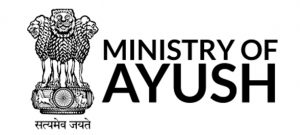
•Through the campaign “Ayush for Immunity”, Ministry of AYUSH aims to aware people about the valuable information about strengths of various Ayush-based solutions for enhancing immunity and preventing diseases.
3) Nagaland Govt launches “YellowChain” centralized e-commerce platform
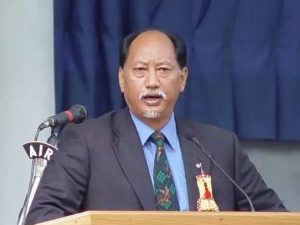
4) Kaushik Khona becomes new CEO of GoAir

5) PNB launches ‘DIGITAL APNAYEN’ campaign to promote digital banking
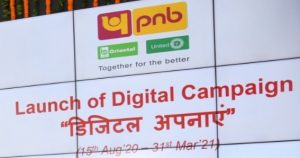
6) 4th Meeting of the BRICS Anti-Drug Working Group
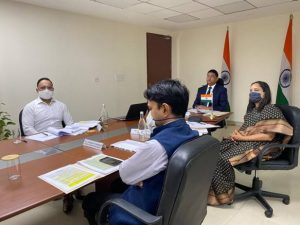
7) Lewis Hamilton wins F1 Spanish Grand Prix 2020

8) Kiren Rijiju launches initiative “Fit India Youth Clubs”
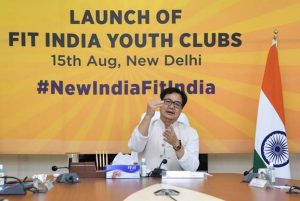
•Under this program, Nehru Yuva Kendra Sangathan and National Service Scheme, Scouts and Guides, NCC and other youth organisations will register as Fit India Youth Clubs in every block in the country, hence Fit India Youth Clubs will unite fitness and voluntarism in a unique manner. Each member of the Fit India Youth Club will encourage people to perform fitness activities of 30 to 60 minutes in his or her daily routine. Fit India Freedom Run will be promoted by the Fit India Youth Clubs as one of its first initiatives.
The HINDU Notes – 17th August 2020
VisionIAS
14:39

📰 Lapsing into contempt
Finding Prashant Bhushan guilty of contempt reflects a low threshold for criticism
•The Supreme Court’s order finding advocate Prashant Bhushan guilty of contempt of court reflects poorly on the institution’s tolerance of criticism. The judgment of a three-judge Bench on the suo motu contempt proceedings against Mr. Bhushan hardly adds to the dignity and majesty of the Court that it ostensibly sets out to uphold. It is unfortunate that two tweets, and not any set of scandalous or scurrilous allegations, have occasioned this heavy-handed treatment. In the 108-page opinion that largely draws upon past judgments delineating the circumstances in which the Court will act in aid of its institutional reputation and authority, there is little more than a perfunctory analysis leading to the finding that the tweets amount to criminal contempt. The first tweet, in which an image of Chief Justice of India S.A. Bobde in an informal setting has been used to make a critical remark that he was denying citizens recourse to justice for fundamental rights violations, may be an exaggerated or even unwarranted view on the absence of physical hearings now. However, it is quite a stretch to say that it undermines the Court’s dignity, lowers its authority or interferes with the administration of justice. At best, it touches partially on the CJI’s personal conduct and partially on his administrative decision-making. Neither part brings with it any exceptional malice or scurrility warranting action for criminal contempt. It is precisely this sort of criticism that the judiciary ought to be able to shrug off.
•The second tweet, in which Mr. Bhushan has blamed the Court, more particularly, the last four CJIs, for “the destruction of democracy” in the last six years, “even without a formal Emergency”, requires no defence. It is clearly in the nature of a political opinion, be it with reference to the working of the institution or the four personages who headed the judiciary during the period. It is difficult to agree that the mere voicing of an opinion that successive CJIs have destroyed democracy would undermine public trust in the judiciary; especially in the backdrop of some former judges, too, holding sharply critical opinion of the conduct of some of them. In its nature, intent and sweep, Mr. Bhushan’s abrasive animadversion of judicial conduct is no more discordant than a former CJI being accused by his colleagues of being under executive influence, or misusing his powers as master of the roster with a view to obtaining favourable outcomes. There is some inadvertent irony in the Court’s claim that allowing Mr. Bhushan’s remarks to go unpunished would lower the country’s image in the comity of nations. The highest court built its stalwart fame on stellar judgments and record of fearless independence. If at all it falls in the estimation of the world now, it may only be because of a growing perception of judicial evasion, self-imposed reticence and quiet acquiescence in the face of executive power.
📰 Big goals
GS SCORE Environment Organisations PDF
VisionIAS
08:49
GS SCORE Environment Organisations PDF
Click Here to download GS SCORE Environment Organisations PDF
Click Here to Like our Facebook page for latest updates and free ebooks





